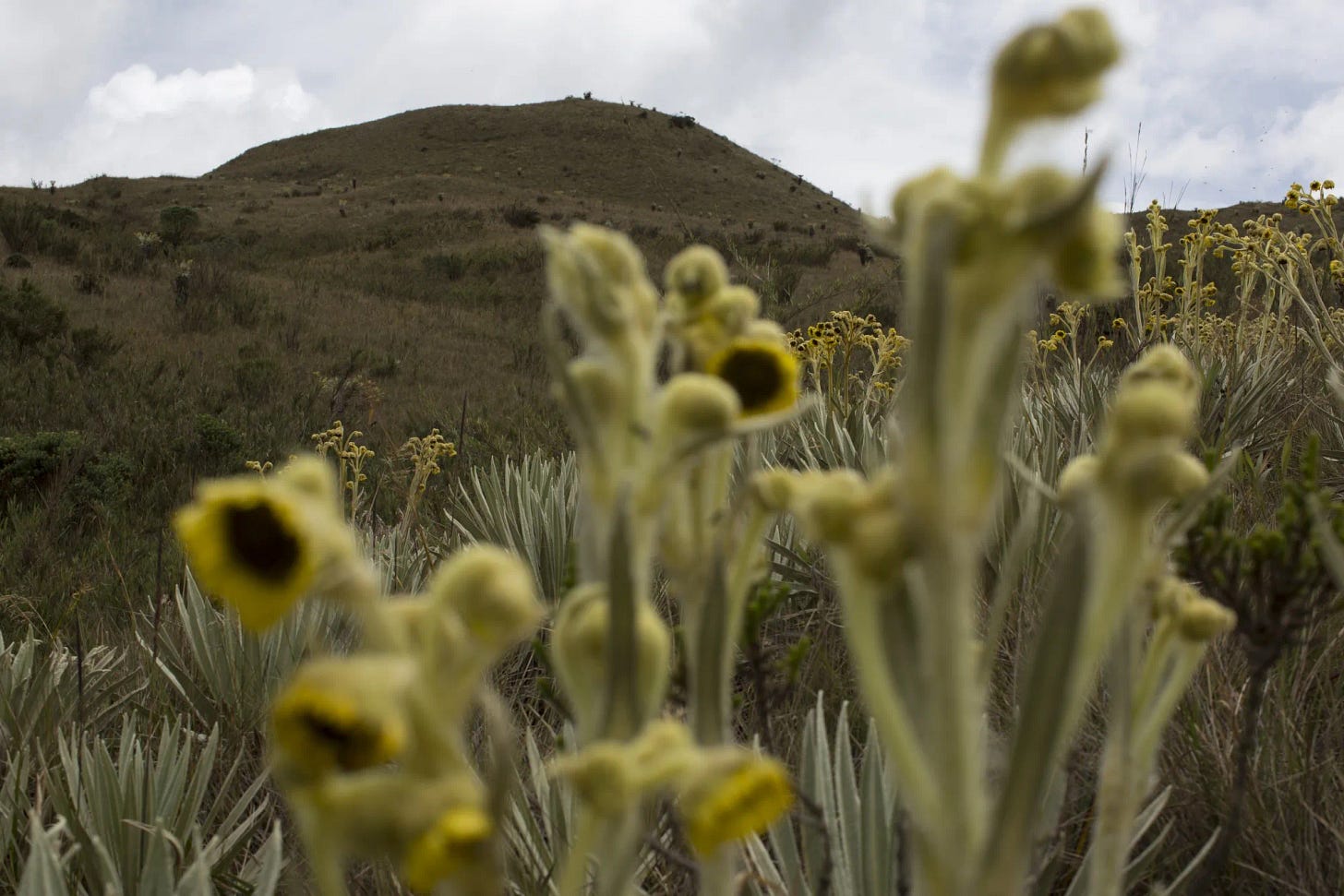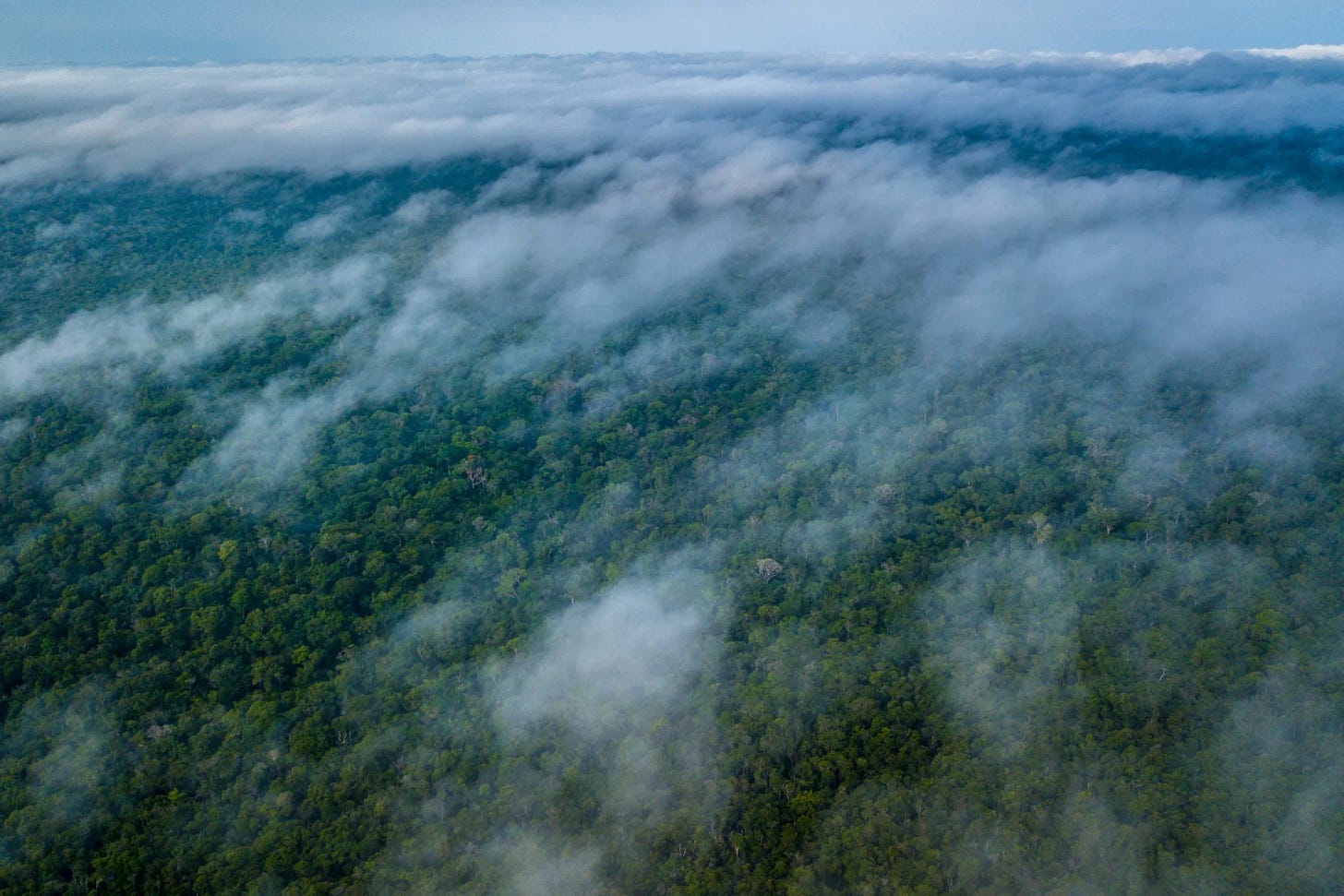What To Expect As COP 16 Opens on Monday
“The people who benefit and the people who pay are different.”
This Bloomberg article is reproduced here in full, and my only comment is I won't be satisfied and the earth might get a small break - but wait, after COP 16 comes COP 29 in November. . .
What to Expect at COP16

October 20, 2024 at 1:47 AM PDT
As countries, investors and lenders begin to gather at the UN biodiversity summit in Colombia, today’s newsletter gives you an idea of what to expect. Read and share this story and keep up with all of the news from the negotiations at Bloomberg.com.
What we’re watching at COP16
Delegates from almost 200 countries are gathering this week in Cali, Colombia, for the biennial United Nations summit on biodiversity, the first one since the landmark Global Biodiversity Framework was signed in Montreal in December 2022.
It comes as natural abundance continues to decline at an alarming rate. The planet is in a “critical situation,” said Susana Muhamad, COP16 president and Colombia’s environment minister.
Read More: Earth Has Overshot Key ‘Planetary Boundaries,’ Scientists Warn
The summit’s goal, Muhamad said, is to “make peace with nature.” In practical terms, that means assessing and advancing nations’ progress on their efforts to implement the 2022 framework. The pact spells out targets from protecting 30% of the globe’s land and sea to halving food waste to slashing use of harmful chemicals.

Who’s going to COP16?
Around 14,000 people are registered to attend — a record turnout, according to Astrid Schomaker, executive secretary of the UN Convention on Biological Diversity. That includes more than 100 government ministers and several heads of state, Muhamad said. Some of the world’s biggest banks, including JPMorgan Chase & Co. and Standard Chartered Plc, are sending representatives for the first time. Citigroup Inc., Bank of America Corp., HSBC Holdings Plc and Deutsche Bank AG will also be present.
What’s on the agenda?
The focus will be threefold:
Combatting ‘biopiracy’
Perhaps the biggest issue is deciding the final details of a new global system to collect and share a sliver of the trillions of dollars in revenue raked in by the world’s largest companies. Conglomerates in sectors like pharmaceuticals and biotechnology would be asked to contribute to a fund to compensate countries from which their resources are derived. That money would in turn be used to protect nature.
In the past, researchers interested in, say, tree sap to help create new drugs would physically export samples. Now, they’re much more likely to take a digital fingerprint. But there’s no global rule governing how countries should be paid for that information on their genetic resources, a situation that some countries liken to a form of piracy.
Discussions are set to be highly contentious. Research firm BloombergNEF rates the likelihood of parties reaching consensus on the details of a mechanism and fund at only 2 in 10.
Taking stock
Countries are due to submit their so-called national biodiversity strategies and action plans for meeting the framework by the start of the summit Monday. At the end of Saturday only 31 countries plus the EU had done so. Laggards include the UK and Switzerland, as well as a number of the world’s so-called “megadiverse” countries, among them Brazil, India and South Africa. (The US is not a signatory.)
Banks and investors are looking to the national plans to help shape their investment decisions and in-house nature strategies. Investors can then “actually start to think about, ‘OK, where are the returns and what will be commercially viable?’” said Judson Berkey, group head of engagement and regulatory strategy at UBS Group AG,
Boosting finance
The 2022 framework called for raising $700 billion per year for nature protection and restoration. As at the better-known climate COPs, who pays, how much and to whom will be points of contention.
On the public finance side, developed countries have committed to contribute at least $20 billion per year by 2025 to poorer countries. For 2022 — the latest year for which data is available — they were $4.6 billion short of that target, according to the Organisation for Economic Co-operation and Development (OECD).
Read More: Why Biodiversity Urgently Needs More Financing Options
There’s already been controversy. Campaign for Nature, a nonprofit, says most of the projects to which the $15.4 billion in biodiversity finance was allocated are only tangentially linked to protecting biodiversity.
Still, Muhamad said she’s calling for developed countries to increase the pledge, and a new broad-based fund is on the table too. “It’s very important to understand that there is a commitment that is going to be fulfilled,” she said. “This is fundamental for the trust between the parties.”
When it comes to private capital, proposals have ranged from impact funds or bonds to a new market for biodiversity credits. Behind closed doors, bankers have said they’re at a loss about how to approach the topic.
Read the full story on Bloomberg.com.
In case you missed it
Last year Britain’s King Charles III warned delegates to the COP28 climate summit that “nature’s unique economy” was in grave danger, and unless humans acted to restore it, “our own economy and survivability will be imperiled.” Now the monarch is taking part in a multi-million-dollar financial experiment to harmonize man’s relationship with the natural world, and using some of his vast landholdings as a laboratory.
The king signed over part of his Sandringham Estate to a private company that will restore its wetlands, meadows and ancient forest over the next 30 years. The company will estimate the improvement to the biodiversity and health of the land, and package that into a tradable biodiversity credit.
As Bloomberg Greenreports, dozens of landowners across England are now inking similar deals. Under a new English law, homebuilders and developers must compensate for the ecological harms of construction, and purchasing these “biodiversity net gain” credits is one way to comply.

There’s another COP around the corner
The United Nations’ summit in Baku, Azerbaijan next month, COP29, has one clear aim: turning billions of dollars in climate finance into trillions, while helping countries embark on the climate transition and deal with increasingly extreme weather.
Avinash Persaud, special adviser on climate change for the Inter-American Development Bank, has spent his career looking for ways to make global markets work to move this money where it’s needed. He says the biggest challenges arise from a simple reality: “The people who benefit and the people who pay are different.”
Persaud spoke with Akshat Rathi on a recent episode of the Zero podcast about the kinds of financial instruments and commitments that can help poorer countries contribute to the energy transition and adapt to a warmer world.



